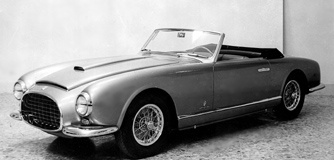|
to quite staid three-box 2+2 coupés from the house of Ghia, with a selection of Vignale interpretations thrown in along the way. A Vignale-bodied 340 America berlinetta won the 1950 Mille Miglia driven by
Villoresi/Cassani. Vignale also produced a unique 340 America cabriolet that unfortunately no longer exists in its original form, as its body was cut up and disposed of as part of an attempted insurance fraud a few years ago,
which led to the remains of the car being fitted with a body in the style of a Vignale spider.
All models in the 340 and 342 America series, whether destined for competition or road use, carried chassis numbers in the
even competition car sequence, even though the latter models were all clearly road cars. Production of the 340 series ran into 1952, when the 342 America model was phased in. Although the change in model reference number (which
referred to the swept volume of a single cylinder) would appear to indicate an increase in engine capacity, it didn't. The engine was essentially the same 4.1 litre unit as fitted to the 340 model, although they could be
visually identified by a different carburettor air filter arrangement.
The 340 and 342 Americas were the first Ferrari road cars to be fitted with an Aurelio Lampredi-designed engine, although there had been a 275 S
sports racing model in 1950, and numerous single-seater engines designed by him, which had proved very successful. Notably, there was the 4.5 litre V12 375 unit in 1951, which took Froilan Gonzalez to Ferrari's first Grand Prix
victory at Silverstone, and of particular note the 2-litre, four-cylinder 500 unit with which Alberto Ascari won the World Drivers' Championship in 1952 and 1953. The Lampredi-designed V12 engines are normally referred to as
'long' block, to differentiate them from the original Colombo design. The reason for this appellation was the spacing of the cylinder bore centres on each bank of the engine, which on the Colombo engine was 90 mm, and on the
Lampredi engine 108 mm, thus increasing the overall length of the block. The wider spacing was necessary to provide the facility for a larger bore diameter, and to incorporate a Lampredi design feature of having the wet
cylinder liners screwed into the head. As with the Colombo-designed engine, the Lampredi unit featured a single overhead camshaft to each bank of cylinders.
The 340 America models destined for competition use were
fitted with dry sump lubrication versions of the 4.1 litre V12 engine, with a bore and stroke of 80 mm x 68 mm, whereas those intended for road use had normal wet sump lubrication, coupled to a 5-speed gearbox driving through a
rigid rear axle. The 342 America model featured the same bore and stroke with a wet sump, but was mated to a new 4-speed, all synchromesh gearbox. The very last example of the series was actually fitted with a 4.5 litre engine,
but still retained the 342 model reference.
The 342 America was produced for a relatively short period during late 1952, with only six examples made, one with a Vignale cabriolet body, and the remainder with a fairly
homogeneous Pininfarina body in either coupé or cabriolet form. They were built on a 2650 mm wheelbase, tubular steel chassis, as opposed to the 2420 mm wheelbase of the 340 America, and also featured slightly wider front and
rear track.
The September 1952 issue of the American magazine 'Road & Track' road-tested a 340 America Vignale-bodied competition berlinetta, and recorded a 0-60 mph time of 6.1 seconds, a 0-100 mph time of 15.5
seconds, and a standing start quarter mile time of 15.45 seconds, noting a factory claimed top speed of 151 mph – impressive figures over half a century ago!
Engine
- Type front, longitudinal 60° V12
- Bore/stroke 80 x 68 mm
- Unitary displacement 341.80 cc
- Total displacement 4101.66 cc
- Compression ratio 8 : 1
- Maximum power 147 (200 hp) at 5000 rpm
- Power per litre 49 hp/l
- Valve actuation single overhead camshaft per bank, two valves per cylinder
- Fuel feed three Weber 40 DCF carburettors
- Ignition single spark plug per cylinder, two coils
- Lubrication wet sump
- Clutch single-plate
Chassis
- Frame tubular steel
- Front suspension independent, unequal-length wishbones, transverse leaf spring, hydraulic shock absorbers
- Rear suspension live axle, semi-elliptic springs, hydraulic shock absorbers
- Brakes drums
- Transmission 4-speed + reverse
- Steering worm and sector
- Fuel tank capacity 105 litres
- Front tyres 6.40 x 15
- Rear tyres 6.40 x 15
Bodywork
- Type two-seater coupé or cabriolet
- Wheelbase 2650 mm
- Front track 1325 mm
- Rear track 1320 mm
- Weight 1200 kg (dry)
Performance
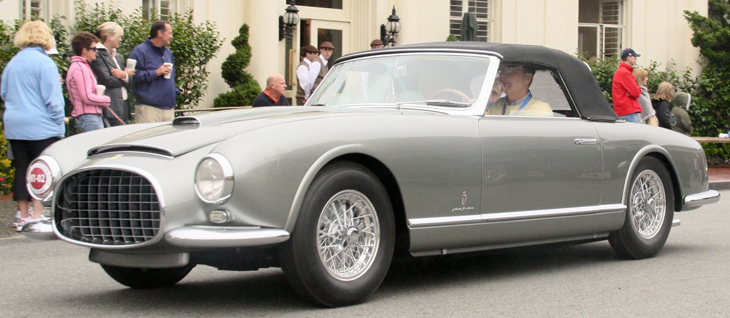
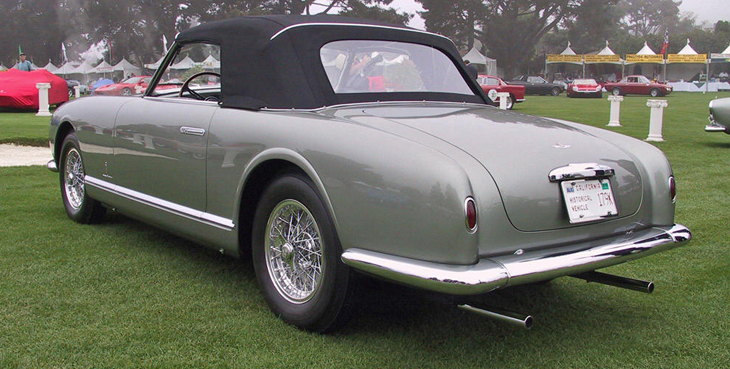
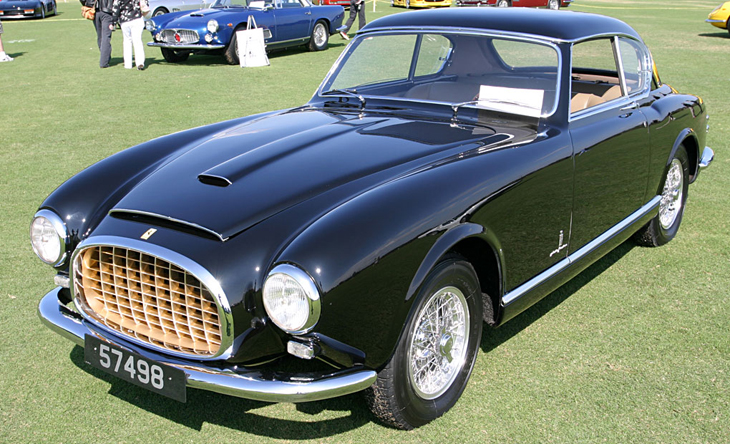
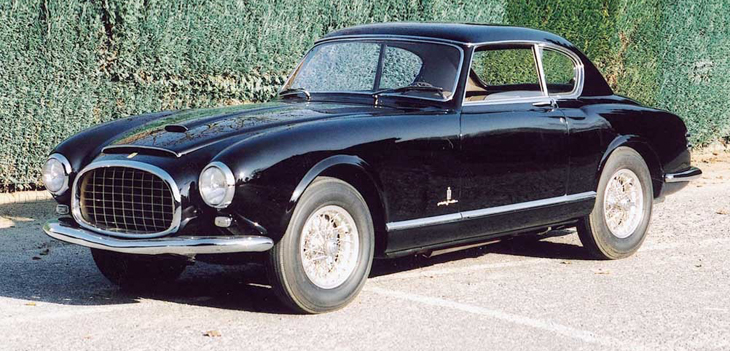
|
